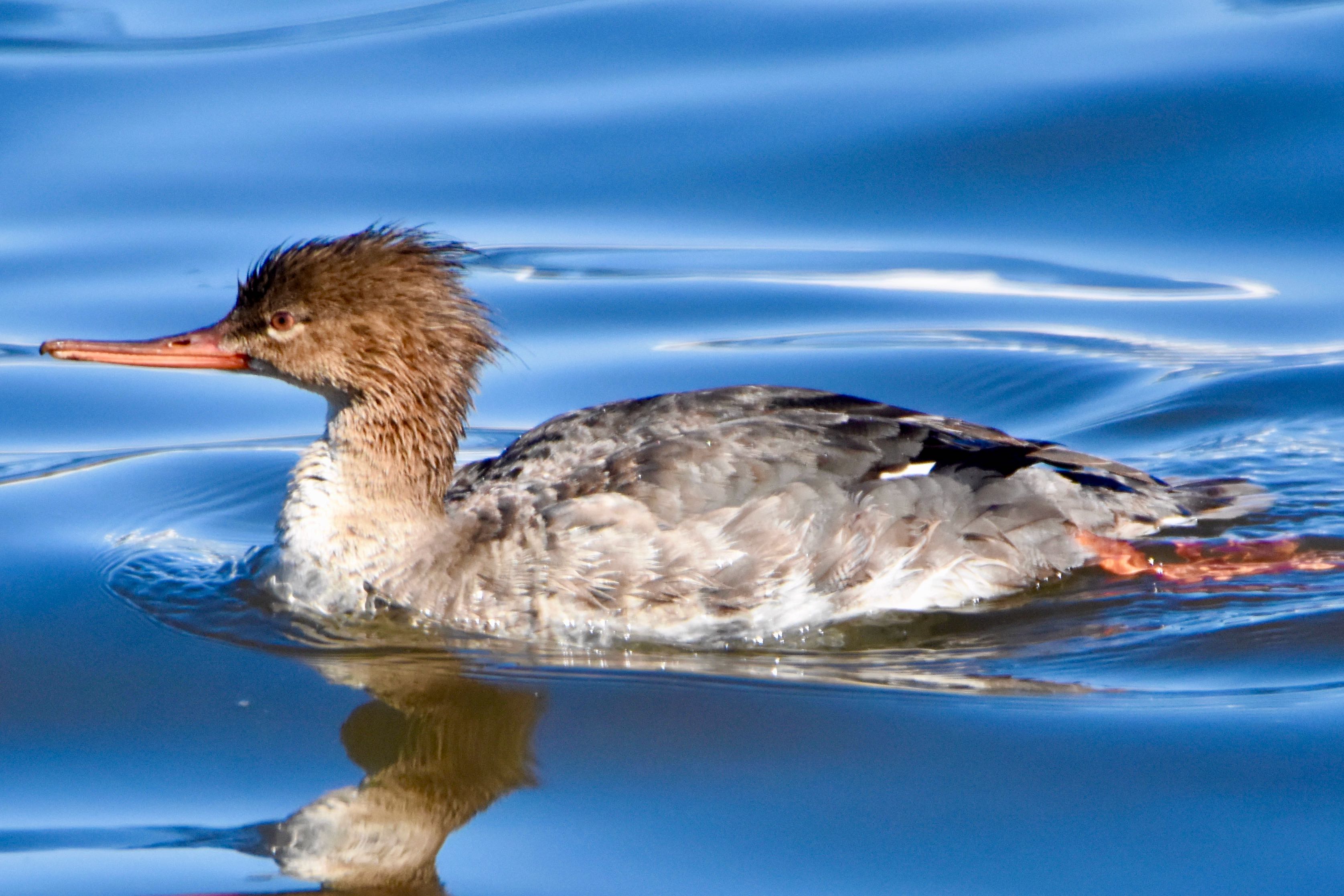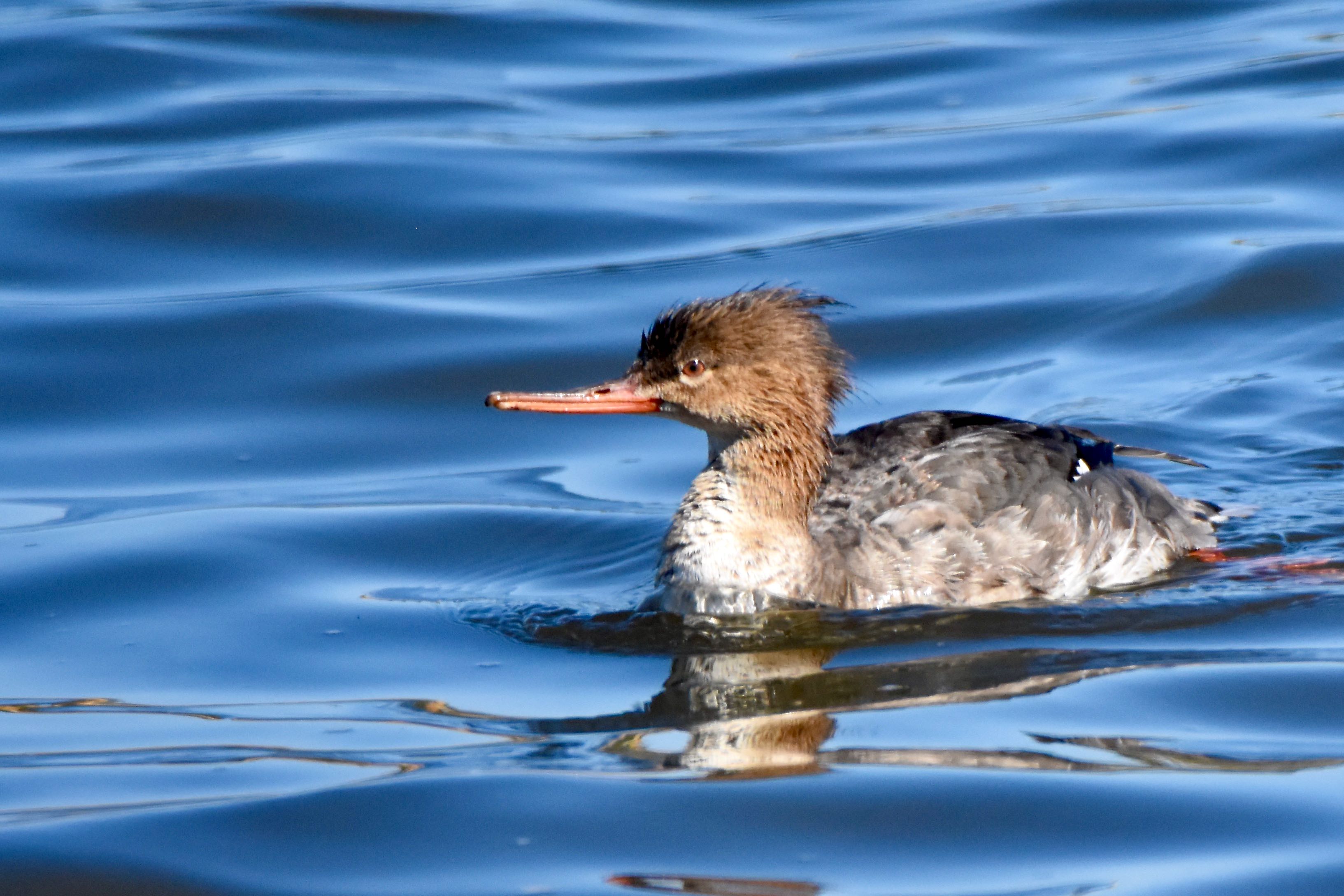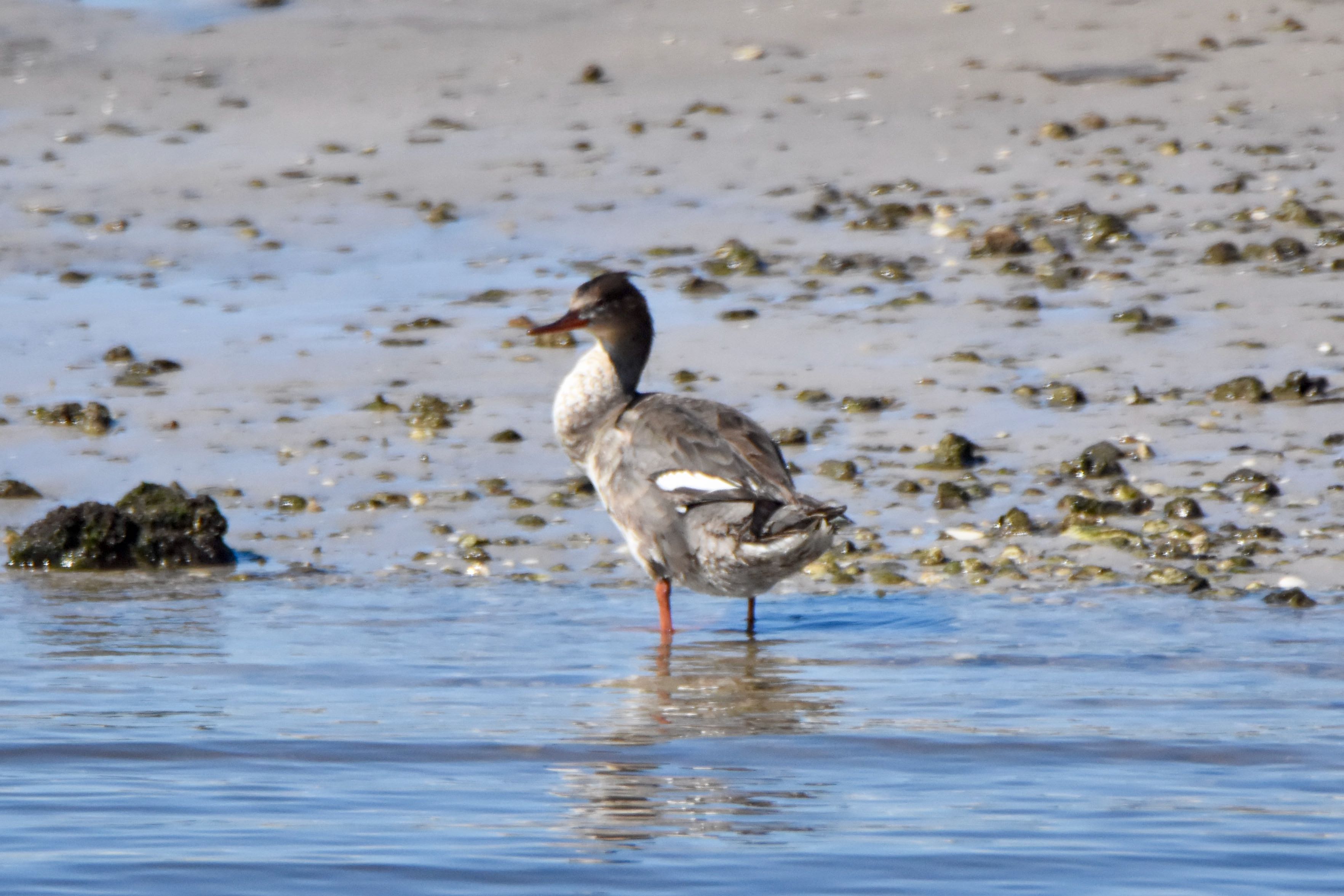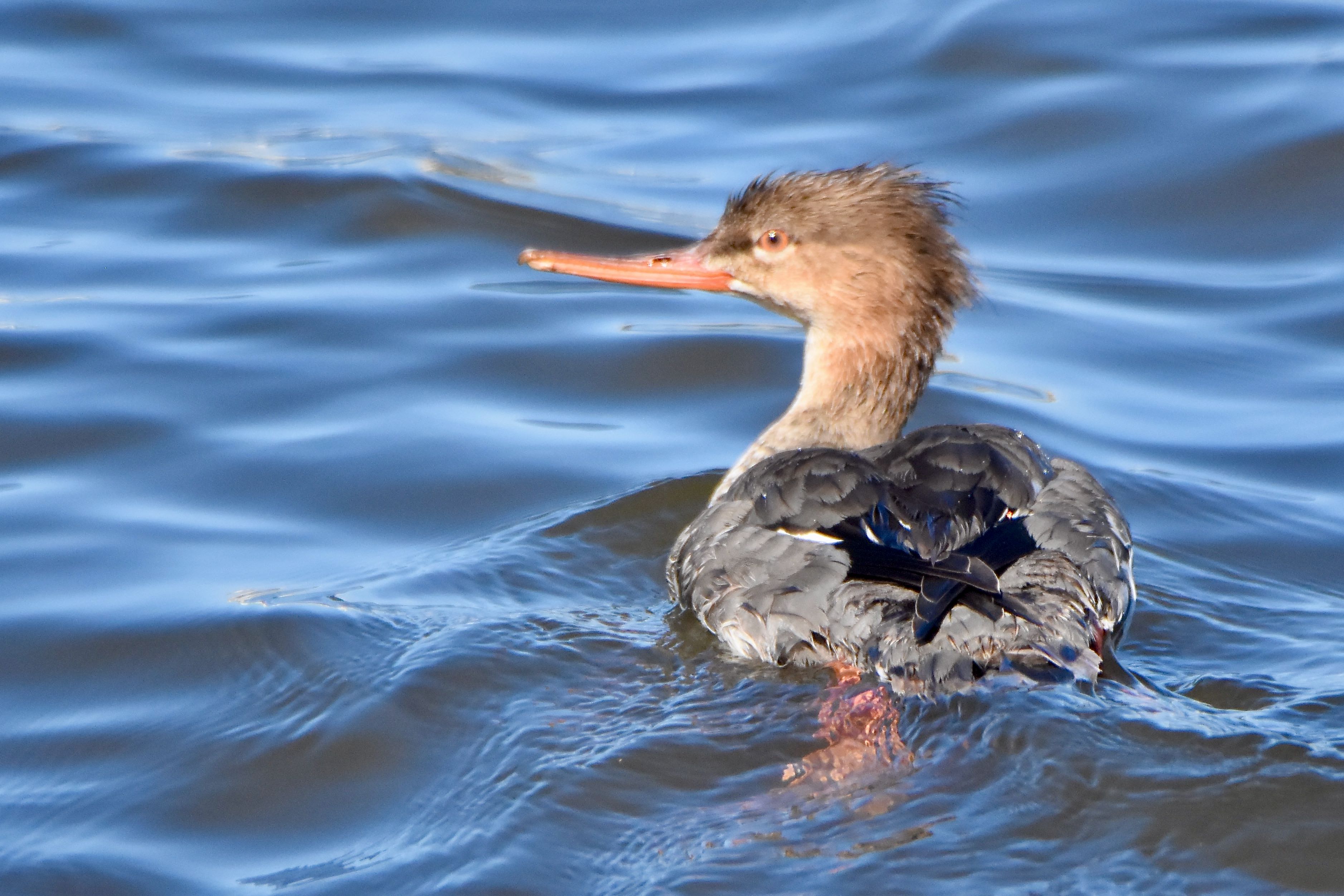
Red-breasted merganser, photographed at Snook Islands Natural Area, Lake Worth, Palm Beach County, in March 2018.
This is one truly cosmopolitan duck. The red-breasted merganser, Mergus Serrator, can be found on four, count 'em, four continents, including parts of Africa.
They'll make their way to Florida come winter, but unlike most ducks, they're most likely to be seen near the coast rather than inland. Mergansers generally can tolerate salt water better than most ducks, but the red-breasted merganser takes it to an extreme, eschewing fresh water except maybe for a break during migration.
No other duck spends the summer breeding season as far north as the red-breasted merganser. They can be found from the northern tier of the United States, through much of Canada to Baffin Island, Greenland, Alaska and into Siberia, beyond the Arctic Circle.
In winter, they'll retreat south, but not necessarily far south, to open waters along the Atlantic, Gulf and Pacific coasts from Labrador in the east and Alaska's Aleutian Islands in the west to points along Mexico's coast. A few might winter over inland, perhaps the Great Lakes and other spots, but by and large, this bird is heading for brine.
Red-breasted mergansers are large as ducks go, with a body length that exceeds two feet and a wingspan of two-and-a-half feet or more, both sexes about the same size. Depending on the season, however, males and females can look dramatically different. In breeding season, males have a dark green head, white neck ring, reddish-brown chest and wings and back that are a mix of patterned grays, with black and white mixed in. Females and nonbreeding males are brownish and pale gray in the throat and chest.
Both males and females have a long, thin bill that is slightly hooked at the end, a shaggy crest and red eyes. The look is similar to the common merganser, but comon mergansers lack the crest, generally favor fresh water over salt and in any case, don't migrate to Florida.
Red-breasted mergansers eat fish mainly, but they'll also dine on bugs, tadpoles and crustaceans. They hunt by diving rather than dabbling.
They are ground nesters, often forming breeding colonies with other birds. Females will scoop out a depression in a concealed spot near water and line it with down. She'll typically lay seven to 10 eggs and incubate them for four to five weeks. Red-breasted mergansers, like a few other ducks, are also known to "dump" eggs in the nests of others. Males leave the scene early during the incubation period, leaving mom to raise the kids. A day or so after they hatch, mom leads her brood to water, where they're able to forage on their own and pretty much will be on their own within a couple of weeks. They'll fledge at two months and become fully mature adults at two years.
Red-breasted mergansers usually aren't the targets of hunters but they are sometimes mistaken for the common merganser, which hunters do target. Their population is considered stable but possibly vulnerable to environmental threats, including pesticides, metals and acid rain. Their vast range, however, provides some insurance for their future, according to the International Union for Conservation of Nature.
Snook Islands Natural Area



